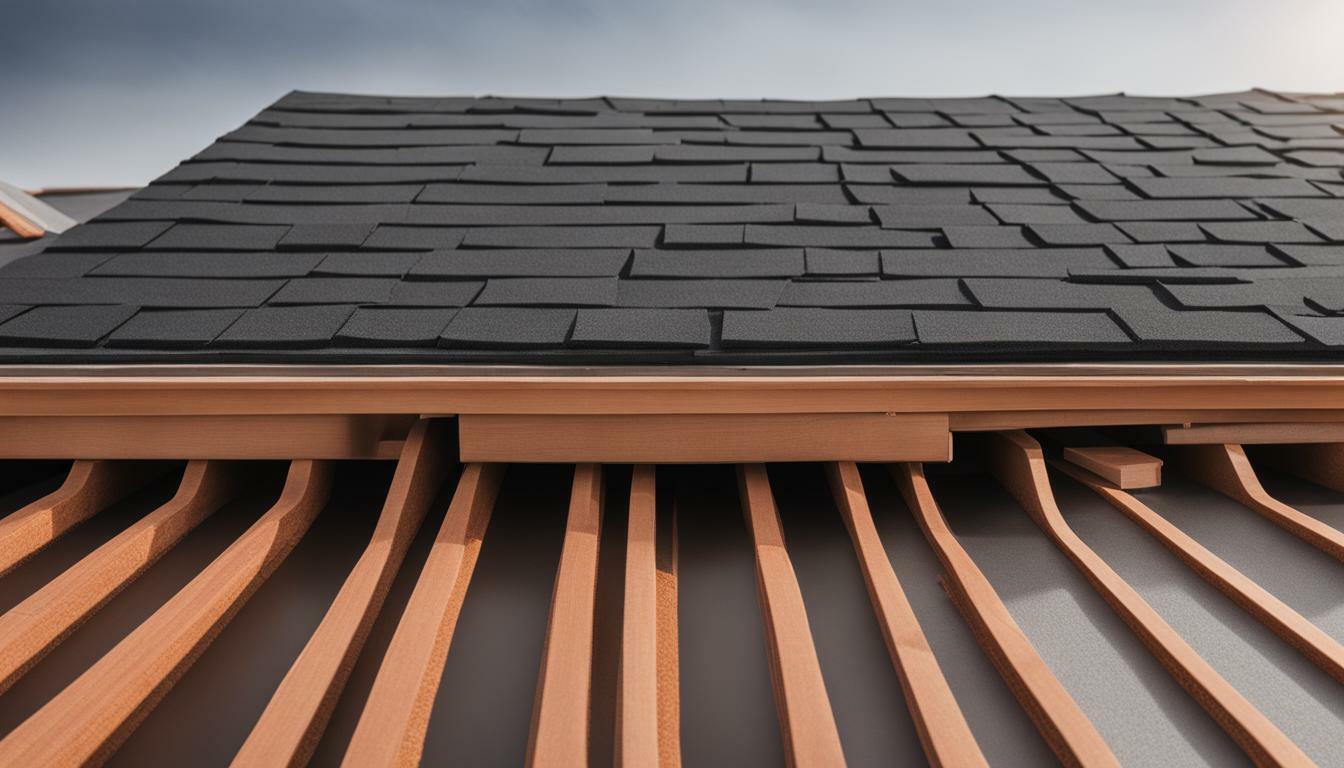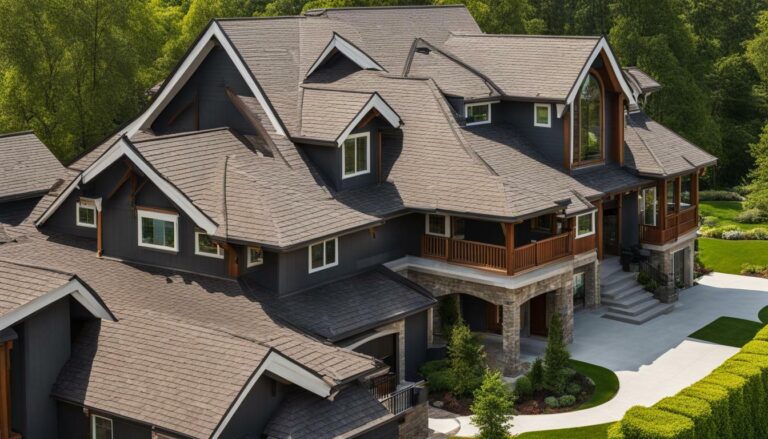Master Roof Soundproofing Techniques for Quieter Living Spaces
Achieve a quieter and more peaceful living space by implementing effective roof soundproofing techniques. Soundproofing your roof is essential for creating a serene environment that allows you to escape from the hustle and bustle of the outside world. Whether you live in a busy urban area or simply desire a more tranquil home, soundproofing your roof can significantly reduce noise pollution and improve your overall quality of life.
- Soundproofing roofs is crucial for creating a peaceful living environment.
- Understanding soundproofing principles and how sound travels through roofs is key to effective roof sound insulation.
- Choosing the right roof soundproofing materials is essential for achieving optimal results.
- Various insulation techniques can effectively reduce roof noise and provide a quieter living space.
- Whether you prefer DIY roof soundproofing or consulting an insulation contractor, there are options available to suit your needs.
Understanding Soundproofing Principles
Before diving into specific techniques, it’s important to understand the principles behind soundproofing and how to effectively reduce noise transmission through roofs. By comprehending these principles, you can make informed decisions about the materials and methods used for soundproofing your living space, resulting in a quieter and more peaceful environment.
Soundproofing primarily involves minimizing the transfer of sound waves from one area to another. This can be achieved through a combination of techniques that prevent sound from passing through roofs, walls, and floors. One of the key principles is to create a barrier that absorbs or reflects sound waves, thus reducing their impact on adjacent spaces.
Noise reduction methods for roofs:
Insulation plays a crucial role in soundproofing roofs. Adequate insulation materials, such as mineral wool or foam, can effectively absorb and dampen sound waves, preventing them from entering your living space. Additionally, using materials with a higher density can provide better sound insulation.
Effective roof sound insulation:
Another soundproofing principle is decoupling, which involves physically separating layers of materials to reduce sound transmission. Decoupling can be achieved by using resilient sound clips and channels that isolate the roof structure from the interior space. This prevents vibrations or impact noise from traveling through the roof and into your living area.
By combining insulation and decoupling techniques, you can significantly improve the sound insulation properties of your roof. It’s important to note that the effectiveness of soundproofing measures may vary depending on various factors, such as the type of roof structure and the level of noise you are trying to mitigate. Consulting with an insulation contractor can provide valuable insights and guidance specific to your situation.

| Noise Reduction Methods for Roofs | Effective Roof Sound Insulation |
|---|---|
| Proper insulation materials | Decoupling with resilient sound clips and channels |
| Higher density insulation | Physical separation of roof structure and interior space |
| Mineral wool or foam insulation | Preventing vibrations and impact noise |
Conclusion
Understanding the principles behind soundproofing roofs is essential for achieving a quieter living space. By implementing effective insulation techniques and incorporating decoupling methods, you can significantly reduce noise transmission through your roof. Remember to consider the specific requirements of your roof structure and consult with experts for expert advice and customized solutions.
Choosing the Right Roof Soundproofing Materials
Selecting the right materials is crucial for successful roof soundproofing. Here, we’ll explore the various options and provide best practices to guide your choices. By understanding the characteristics of different soundproofing materials, you can make informed decisions to create a quieter living space.
Acoustic Insulation
One of the key components of effective roof soundproofing is acoustic insulation. This material is designed to absorb sound waves and minimize noise transmission. There are various types of acoustic insulation available, including fiberglass, mineral wool, and cellulose. Fiberglass insulation is a popular choice due to its affordability and ease of installation. It is also available in different thicknesses, allowing you to customize the level of soundproofing for your specific needs.
Mass Loaded Vinyl (MLV)
Mass loaded vinyl (MLV) is another commonly used material for roof soundproofing. It is a dense, flexible barrier that effectively blocks sound transmission. MLV can be installed directly on the roof surface or in between layers of drywall. It is particularly effective in reducing airborne noise, such as traffic or aircraft sounds. MLV is available in different thicknesses and can be easily cut and installed to fit any roof shape or size.
Resilient Channels
Resilient channels are metal strips that are used to separate the ceiling or drywall from the roof structure. They help to decouple the ceiling from the roof, preventing sound vibrations from traveling through. When installing resilient channels, it is important to follow the manufacturer’s instructions to ensure proper installation and maximum soundproofing benefits.
| Material | Pros | Cons |
|---|---|---|
| Acoustic Insulation | – Absorbs sound waves – Customizable thickness – Affordable |
– Requires professional installation for optimal results |
| Mass Loaded Vinyl (MLV) | – Blocks sound transmission – Flexible and easy to install – Effective against airborne noise |
– Can be heavy and bulky – May require additional structural support |
| Resilient Channels | – Decouples ceiling from roof – Prevents sound vibrations – Relatively easy to install |
– Can be time-consuming to install properly – May affect ceiling height |
When selecting roof soundproofing materials, it is important to consider factors such as your budget, the level of soundproofing required, and the ease of installation. Consulting with a professional insulation contractor can provide valuable insights and guidance based on your specific needs. By choosing the right materials and following best practices, you can effectively soundproof your roof and create a peaceful living space.
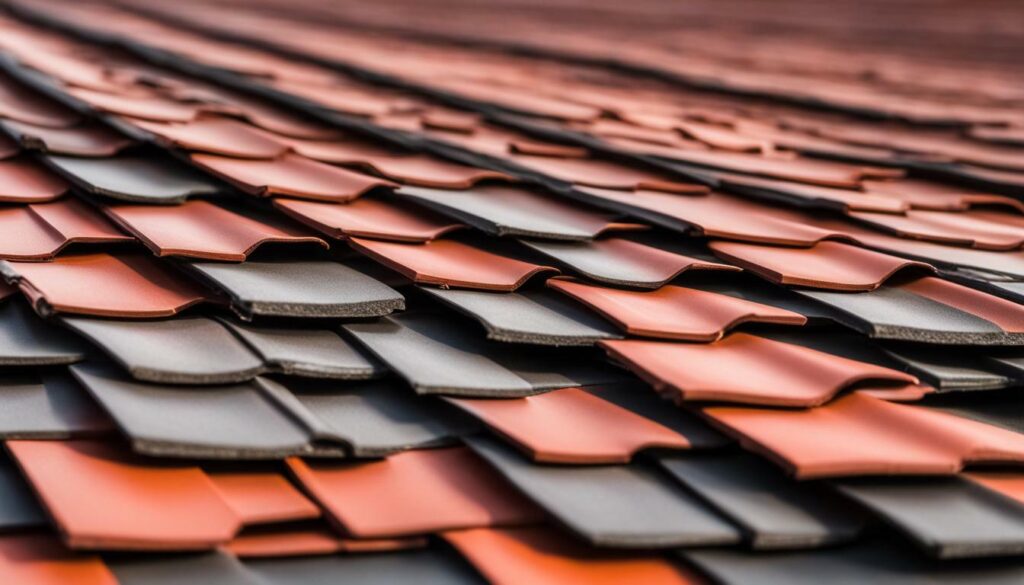
Insulation plays a vital role in reducing roof noise. In this section, we’ll explore effective techniques and options to achieve optimal soundproofing for your roof. By implementing these insulation methods, you can create a quieter and more peaceful living space.
“Soundproofing the walls can be done using resilient sound clips and channels in conjunction with insulation. Adding a second layer of drywall with Green Glue damping compound can also help.”
One effective technique for soundproofing your roof is through the use of resilient sound clips and channels. These mechanisms provide a separation between the existing structure and the new soundproofing material, reducing the transmission of noise. When combined with insulation, such as fiberglass or cellulose, it creates a barrier that absorbs and dampens sound waves.
Another method to consider is the installation of a second layer of drywall using Green Glue damping compound. This compound acts as a viscoelastic material, converting sound energy into heat. It effectively reduces airborne noise and vibrations that can pass through the roof.
To achieve optimal results, it’s important to choose the right materials and techniques for your specific roof structure. Here is a table that summarizes the various insulation techniques:
| Insulation Technique | Description |
|---|---|
| Resilient Sound Clips and Channels | Create separation between existing structure and new soundproofing material to reduce noise transmission. |
| Second Layer of Drywall with Green Glue | Viscoelastic compound that converts sound energy into heat, effectively reducing airborne noise and vibrations. |
By employing these insulation techniques, you can significantly reduce roof noise and create a more serene environment in your living space.

Ready to soundproof your roof? Follow these step-by-step instructions to effectively reduce noise and enjoy the benefits of a quieter living space. Whether you’re dealing with external noise from traffic or neighbors or internal noise from heavy rain or HVAC systems, soundproofing your roof can make a significant difference in creating a peaceful environment.
To start, you’ll need to assess the current condition of your roof and identify any gaps or weak points that may contribute to noise leakage. Inspect for any cracks or openings, and seal them with acoustic caulk or weatherstripping. Additionally, ensure that your roof is properly insulated to minimize sound transmission.
Next, consider adding a soundproofing layer to your roof. Mass loaded vinyl (MLV) is a popular choice for its excellent sound-dampening properties. Install MLV on top of your existing roof underlayment, ensuring complete coverage. Alternatively, you can opt for acoustic foam panels or insulation boards, which provide additional sound absorption.
Finally, don’t forget about the importance of ventilation. Proper airflow in your attic space can help reduce heat buildup and prevent condensation, which can contribute to noise issues. Install roof vents or exhaust fans as needed to ensure optimal ventilation while maintaining soundproofing effectiveness.

By following these steps and investing in quality soundproofing materials, you can transform your roof into a barrier against disruptive noise. Enjoy a quieter living space and reap the benefits of improved comfort and tranquility.
Soundproofing Techniques for Different Roof Structures
Soundproofing techniques may vary depending on your roof structure. Discover the most effective methods for different types of roofs in this section.
For flat roofs, one effective technique is to install a mass-loaded vinyl (MLV) barrier directly over the existing roof surface. This barrier acts as a sound barrier, reducing the transmission of noise from the outside. Additionally, adding a layer of sound-absorbing insulation on top of the MLV can further enhance the soundproofing.
If you have a pitched or sloped roof, insulation is key to soundproofing. Consider using soundproofing materials such as acoustic panels or foam insulation boards between the roof rafters. This helps to absorb and dampen sound vibrations, reducing the amount of noise that enters your living space. Additionally, sealing any gaps or cracks in the roof structure can further enhance the soundproofing effectiveness.
For metal roofs, which tend to be more prone to conducting noise, adding an extra layer of insulation is crucial. Consider using insulation materials that have both thermal and soundproofing properties, such as fiberglass or cellulose insulation. These materials help to absorb and block sound vibrations, creating a quieter living space.
Roof Soundproofing Techniques Comparison
| Roof Type | Recommended Soundproofing Technique |
|---|---|
| Flat Roof | Install a mass-loaded vinyl (MLV) barrier and add sound-absorbing insulation |
| Pitched/Sloped Roof | Use soundproofing materials between roof rafters and seal any gaps or cracks |
| Metal Roof | Add an extra layer of insulation with thermal and soundproofing properties |
By choosing the right soundproofing techniques for your specific roof structure, you can effectively reduce noise transmission and create a quieter, more peaceful living environment.
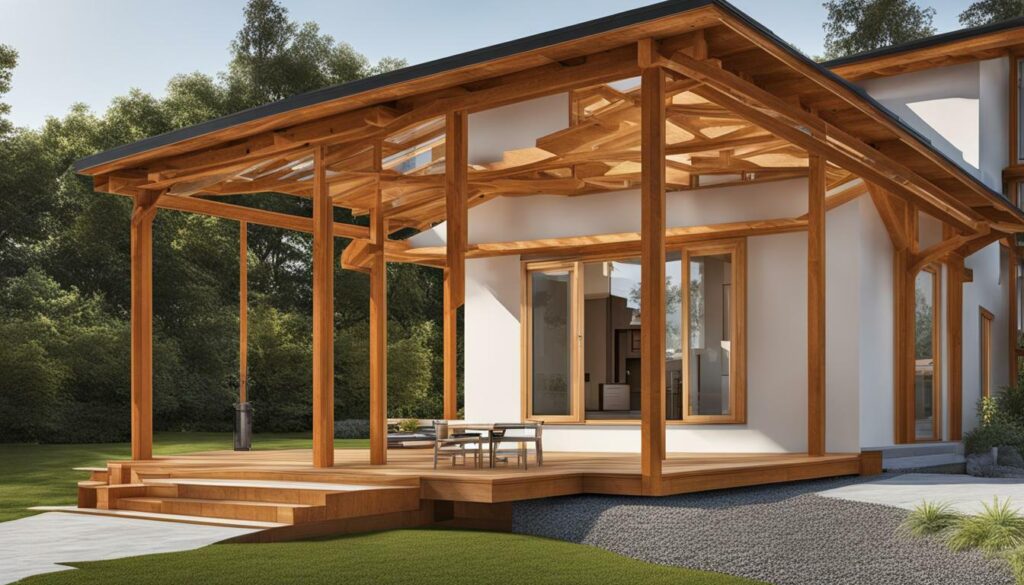
Looking to tackle your own roof soundproofing project? Here are some valuable tips and recommendations to ensure successful DIY soundproofing.
1. Choose the right roof soundproofing materials: Selecting the appropriate materials is crucial for effective soundproofing. Consider using materials such as mass loaded vinyl (MLV), acoustic foam panels, or soundproof insulation to block and absorb sound waves.
2. Focus on air gaps and leaks: Inspect your roof for any gaps, cracks, or leaks that could allow sound to enter or escape. Seal these openings using weatherstripping, caulk, or acoustic sealant to create an airtight barrier.
3. Install resilient sound clips and channels: These specialized mounting systems help decouple the ceiling from the structure, reducing the transmission of sound vibrations. By isolating the ceiling, you can significantly minimize noise transfer from the roof.
| Material | Effectiveness | Installation Complexity |
|---|---|---|
| Mass Loaded Vinyl (MLV) | High | Moderate |
| Acoustic Foam Panels | Moderate | Low |
| Soundproof Insulation | High | Moderate |
4. Consider double glazing your windows: If your roof noise issues are accompanied by external noise sources, upgrading your windows to double glazing can provide additional soundproofing. The air gap between the glass panes helps reduce sound transmission.
“Proper installation of roof soundproofing materials and attention to detail can make a significant difference in reducing unwanted noise.”
5. Consult an insulation contractor: When in doubt or dealing with complex roof structures, it’s wise to seek professional advice. An insulation contractor can assess your specific situation and recommend the best practices and materials for soundproofing your roof effectively.
By following these tips and taking a strategic approach to soundproofing, you can create a quieter and more peaceful living environment in your home. Remember, proper installation of roof soundproofing materials and attention to detail can make a significant difference in reducing unwanted noise.
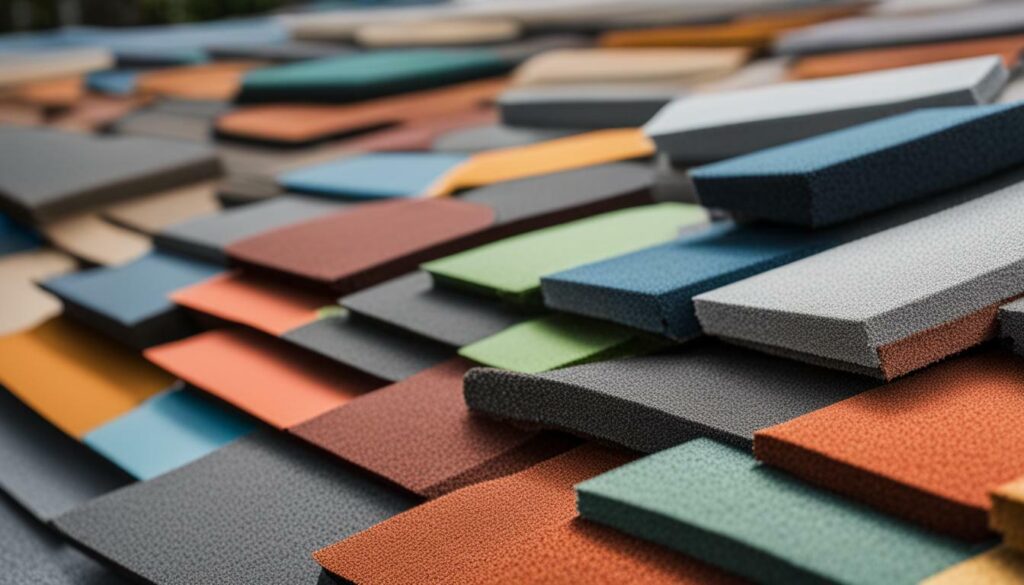
When it comes to roof soundproofing, consulting an experienced insulation contractor can provide valuable expertise and ensure optimal results. Soundproofing a roof involves selecting the right materials and implementing effective strategies to reduce noise transmission. An insulation contractor will have in-depth knowledge of the various roof soundproofing materials available in the market and can recommend the most suitable options for your specific needs.
Working with an insulation contractor offers several advantages. Firstly, they can assess your roof structure and identify any potential weak points that may contribute to noise leakage. They can then suggest targeted solutions to address these issues and maximize soundproofing effectiveness.
An insulation contractor can also guide you on best practices for soundproofing roofs. They can provide expert advice on proper installation techniques and ensure that all materials are applied correctly. This attention to detail is crucial in achieving long-lasting soundproofing results.
| Benefits of Consulting an Insulation Contractor |
|---|
| Expertise in roof soundproofing materials |
| Identification of weak points and targeted solutions |
| Guidance on best practices for installation |
| Assurance of optimal soundproofing results |
Consulting an insulation contractor is highly recommended for anyone considering roof soundproofing. Their expertise and knowledge can make a significant difference in achieving a quieter living space.
Remember to choose an insulation contractor who has experience specifically in roof soundproofing. They should be able to provide references and examples of their work to ensure their expertise matches your project requirements.

Whether you are dealing with excessive external noise or want to create a peaceful living space, consulting an insulation contractor for expert advice is a smart decision. With their guidance, you can select the right roof soundproofing materials and techniques that suit your needs, helping you achieve a quieter and more comfortable environment.
Soundproofing Solutions for Specific Roofing Issues
Certain roofing issues can exacerbate noise problems. In this section, we’ll address common concerns and provide effective soundproofing solutions for specific roofing issues. Whether you’re dealing with rain noise, HVAC unit vibrations, or external traffic sounds, these solutions will help create a quieter and more peaceful living space.
Rain Noise
Rainfall can create a soothing ambiance, but the noise it creates on the roof can be distracting, especially during heavy downpours. To combat this issue, consider the following soundproofing solutions:
- Install acoustic insulation in the attic to absorb the sound of raindrops hitting the roof.
- Ensure proper ventilation in the attic to prevent condensation, which can amplify the sound of rain.
- Address any leaks or gaps in the roof to minimize water penetration and reduce the noise caused by dripping water.
HVAC Unit Vibrations
If you have an HVAC unit mounted on the roof, the vibrations it produces can resonate throughout the building and contribute to noise pollution. Here are some solutions to minimize the impact of HVAC unit vibrations:
- Use vibration isolation pads or mounts to create a barrier between the unit and the roof, reducing the transmission of vibrations.
- Insulate the HVAC unit with sound-absorbing materials to dampen the noise produced by the equipment.
- Consider installing a roof curb or platform to further isolate the unit from the roof structure.
External Traffic Sounds
Living near a busy road or highway can expose your home to unwanted external noise. To mitigate the impact of traffic sounds on your roof, try the following soundproofing solutions:
“The sound of traffic can be a major source of annoyance, but with the right soundproofing techniques, you can enjoy a quieter living space.”
– Expert Soundproofing Contractor
| Soundproofing Solution | Description |
|---|---|
| Install double-glazed windows | The extra layer of glass with sound-dampening properties helps minimize noise penetration. |
| Use sound-blocking curtains or blinds | Thick curtains or blinds made from sound-absorbing materials can further reduce noise infiltration. |
| Seal any gaps or cracks | Check for air leaks around windows, doors, and vents, and seal them with weatherstripping or caulk. |
| Plant noise-reducing vegetation | Strategically place trees, shrubs, or hedges along the perimeter of your property to act as natural sound barriers. |
By implementing these soundproofing solutions, you can significantly minimize the impact of external traffic sounds on your living space, creating a more peaceful environment for you and your family.

Proper roof soundproofing not only provides immediate noise reduction but also offers long-term benefits for a more peaceful and enjoyable living space. By implementing effective noise reduction methods for roofs, you can create a quieter environment that promotes relaxation, productivity, and overall well-being.
One of the key benefits of roof soundproofing is improved sleep quality. Excessive noise from outside sources, such as traffic, airplanes, or neighbors, can disrupt your sleep patterns and leave you feeling tired and irritable. By reducing the amount of noise that enters your home through the roof, you can enjoy a more restful sleep and wake up feeling refreshed.
Roof soundproofing also enhances the comfort of your living spaces. Unwanted noise can negatively impact your ability to concentrate, work from home, or simply enjoy leisure activities without distractions. By investing in soundproofing solutions for your roof, you can create a peaceful and productive environment where you can focus on what matters most to you.
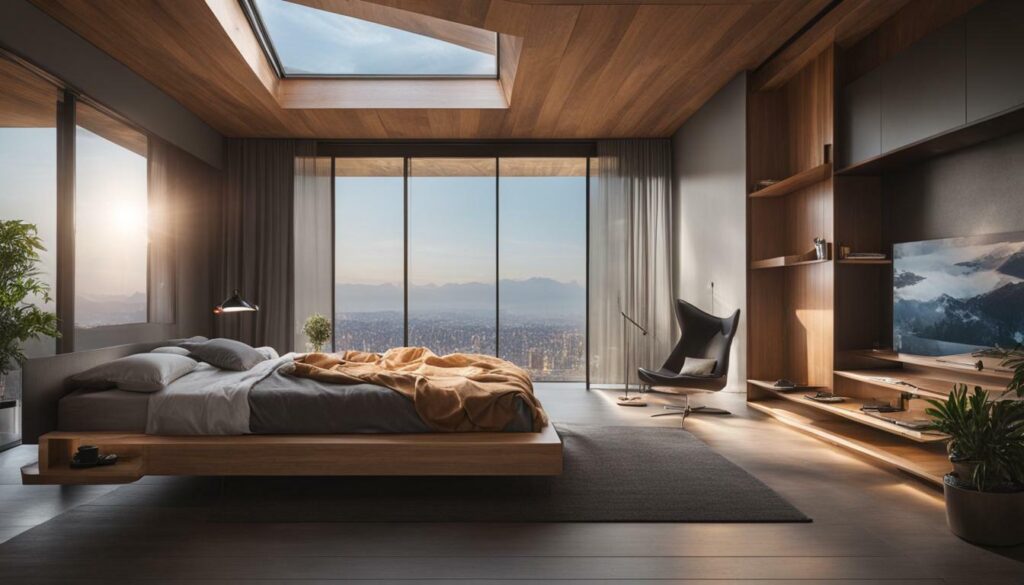
| Benefits of Roof Soundproofing |
|---|
| Noise reduction for improved sleep quality |
| Enhanced productivity and concentration |
| Increased privacy and reduced disturbance from neighbors or outside noise sources |
| A more comfortable and enjoyable living space |
Furthermore, roof soundproofing provides increased privacy and reduces disturbance from neighboring properties or external noise sources. Whether you’re working from home, enjoying family time, or simply relaxing, having a quieter living space can make a significant difference in your overall quality of life.
Investing in proper roof soundproofing techniques is a long-term solution for a more peaceful and enjoyable living space. By reducing noise from external sources, you can create an environment that promotes relaxation, concentration, and overall well-being. Whether you choose to consult with an insulation contractor or take on a DIY project, soundproofing your roof is a worthwhile investment that yields lasting benefits.
Conclusion
By following the master roof soundproofing techniques discussed in this article, you can create a quieter and more peaceful living space. Soundproofing your roof is essential for reducing noise pollution and creating a comfortable environment where you can relax and unwind.
Understanding the principles of soundproofing and choosing the right materials are crucial steps in achieving effective roof sound insulation. Whether you have a flat roof, pitched roof, or any other roof structure, there are specific techniques tailored to your needs.
For those who prefer to take on DIY projects, practical tips and advice can help you successfully soundproof your roof. However, consulting an insulation contractor for expert guidance is highly recommended, especially if you encounter specific roofing issues that require targeted solutions.
Investing in proper roof soundproofing not only benefits you in the short term but also provides long-term benefits. You can enjoy a quieter living space, improve sleep quality, and enhance your overall well-being. Take the necessary steps to soundproof your roof and create the peaceful environment you deserve.
FAQ
Q: What are some effective methods for soundproofing walls?
A: Resilient sound clips and channels, insulation, and adding a second layer of drywall with Green Glue damping compound can help soundproof walls.
Q: How can I reduce impact sound on the floor above?
A: You can decouple the ceiling and treat the floor itself. Using mass loaded vinyl (MLV) on the ceiling can help reduce impact sound.
Q: How does joist gasket tape help reduce noise transferred through drywall?
A: Joist gasket tape reduces noise transferred by creating a barrier between the drywall and the joists. It is not necessary to use glue when using the tape.
Q: What is the recommended method for soundproofing with Green Glue when installing tile or reducing toilet noise?
A: For installing Green Glue with tile, a second layer of plywood with Green Glue in between can be used. To reduce toilet noise, a second layer of drywall with Green Glue in between is recommended.
Q: How can I soundproof a basement woodshop?
A: Decoupling and adding mass can help with soundproofing. Green Glue viscoelastic damping compound is effective on all frequencies.
Q: Will caulking compromise the soundproofing when using resilient clips and channels on the walls and ceiling?
A: No, caulking between the walls and ceiling when using resilient clips and channels will not compromise the soundproofing.
Q: What is the recommended method for soundproofing a second-story addition over an existing room?
A: The recommended method includes using joist gasket tape, two layers of subfloor with Green Glue between them, and decoupling between the floors.
Q: How can I soundproof a bedroom and bathroom?
A: Double stud walls with resilient sound clips and channels are recommended. Adding acoustical panels can also help reduce subwoofer vibrations and sounds.
Q: How can I reduce traffic noise coming through the eaves?
A: You can cover the opening with joint compound or mass loaded vinyl (MLV), but it is advised to consult with an insulation contractor for the best solution.
Q: Should the second layer of subfloor with Green Glue be screwed to the joists?
A: Yes, screwing the second layer of subfloor to the joists is necessary to avoid transferring vibration.
Q: Is additional soundproofing needed when installing standard lighting fixtures?
A: No, additional soundproofing is not needed if the fixtures are installed properly.
Q: How can I reduce sound transfer between a master bedroom and a great room?
A: Adding mass loaded vinyl on top of the existing sheetrock, followed by another layer of sheetrock with Green Glue, can help reduce sound transfer.
Q: Is an open ceiling plan recommended for soundproofing?
A: No, an open ceiling plan is not recommended for soundproofing. Fiberglass insulation is better than spray foam for sound insulation.
Q: Is it more effective to soundproof during new construction or in an existing room?
A: It is more effective and cost-effective to complete soundproofing during the blueprint phase of new construction compared to soundproofing an existing room.
Q: What soundproofing methods are recommended for new construction?
A: Noise-reducing drywall, insulating interior walls, and floating floors with vibration-absorbing materials are soundproofing methods recommended for new construction.
Q: How can I soundproof an existing room?
A: You can soften surfaces with carpet and plush furniture, seal gaps under doors and around outlets, and use white noise to mask unwanted sound.
Q: What Sound Transmission Coefficient (STC) can be achieved with SilentFX QuickCut drywall?
A: SilentFX QuickCut drywall can achieve an STC of 50 or higher, providing a quieter living space.
